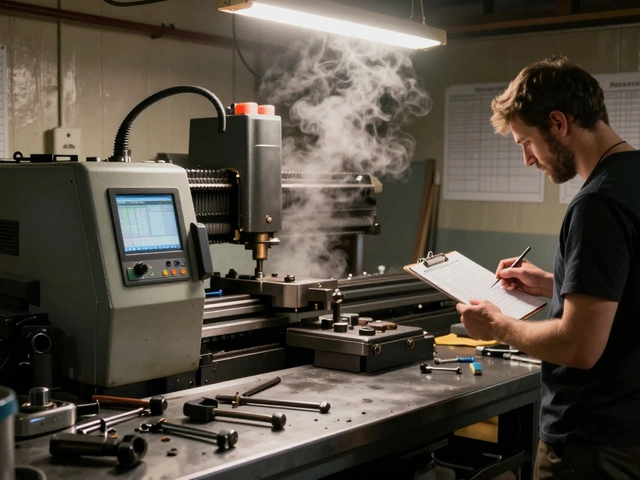Bengaluru doesn’t just lead in software—electronics is its other big claim to fame. You’ve probably heard people call it “Electronics City” and they’re not exaggerating. Ask anyone in the electronics business where to set up shop or hunt for top tech talent, and Bengaluru pops up first every time.
What makes it unique? For starters, Electronics City isn’t just a nickname. It’s a real place, about half an hour from the city center, built purposely for electronics manufacturing. With more than 150 tech companies crammed into its 800-acre stretch, it feels like Silicon Valley moved to southern India—only with spicier food and way more scooters.
If you’re scouting for a job in hardware design, chip manufacturing, or anything that needs a circuit board, this is where you want to be. Big names like Infosys, Wipro, and Siemens sit here side by side with ambitious new startups. Even if you’re a small entrepreneur trying to break into electronics, the connections and supply chains here can speed up what usually takes years elsewhere.
- Why Bengaluru is Called Electronics City
- Inside Electronics City: What’s Really There?
- How the Ecosystem Boosts Business
- Tips for Entrepreneurs and Job Seekers
- What the Future Holds for India’s Electronics Hub
Why Bengaluru is Called Electronics City
Back in the early 1970s, the Indian government wanted to kickstart the country’s electronics industry. Bengaluru already had a strong reputation for engineering schools and skilled techies, so it just made sense to build a special zone here. That’s how the actual place called Electronics City was set up in 1978 by KEONICS (Karnataka State Electronics Development Corporation Limited). The goal? Give tech companies the space, power, and roads they needed to really scale up manufacturing.
It didn’t take long for this spot to become the heart of India’s electronics business. Tons of local and international firms set up shop here, turning Bengaluru into the main hub for electronics manufacturing and R&D. Over the years, the area expanded in ways nobody imagined—by 2024, it covered 800 acres and counted more than 200 companies. You’ll see everything from circuit board designers to massive chip makers in just a few blocks.
What really sealed Bengaluru’s image as the Electronics City of India was its mix of easy access to tech talent, strong government support, and an environment where big brands and startups mix. This blend makes it super easy to find suppliers, collaborate, or even just spot the next big breakthrough.
Wondering what kind of impact Electronics City actually has? Here’s a snapshot:
| Fact | Stat |
|---|---|
| Area Covered | 800+ acres |
| No. of Companies (2024) | 200+ |
| Direct Jobs Provided | ~100,000 |
| Year Established | 1978 |
Plus, with such a massive concentration of know-how, Bengaluru set the pace for other cities trying to build their own tech parks. Today, it’s tough to talk about India’s electronics sector and not mention Bengaluru right at the top.
Inside Electronics City: What’s Really There?
This is not just another business district. Electronics City is packed with all sorts of companies—giants, startups, R&D labs, and even schools. Here's what you'll actually find behind those gates.
The area is broken up into three distinct phases. Phase I is the oldest, where most of the bigger names set up back in the 1980s and 1990s. Phase II and III came later to handle the overflow and bring in even more manufacturers, from mobile phone assembly to electric vehicle parts.
The place has more than just office buildings. You’ll spot testing labs, warehouses, cafeterias, and training centers. Some companies even have full campuses with their own sports facilities to keep teams happy. What’s wild is that you can walk from a company like Infosys to a PCB prototyping shop in less than ten minutes.
To get specific, here’s a quick look at some of the big names and what they do inside Electronics City:
- Infosys: Their biggest campus is right here, not just for coding but also IoT, automation, and electronics testing labs.
- Siemens: Manufacturing and R&D for industrial automation gear and smart grids.
- Biocon: India’s largest biotech, with tonnes of electronics used for drug manufacturing and testing.
- Tech Mahindra: Hardware design, especially for telecom gear.
- HCL and Wipro: Mixing IT support with electronics prototyping and embedded systems work.
In case you’re curious about the ecosystem size, check out the numbers:
| Fact | Data |
|---|---|
| Number of companies | Over 200 |
| Jobs generated | More than 100,000 direct |
| Land area | 800+ acres |
| Year established | 1978 (by KEONICS) |
| Startup incubators | 10 major, plus colleges like IIIT-B |
Here’s one practical tip for anyone visiting: most companies keep their main recruitment and HR offices here, so if you’re job hunting or selling hardware, this is the spot to show up for walk-ins or cold calls. Also, the place has decent public transport links, but traffic can get wild during peak hours, so plan ahead.
All in all, if you step into Electronics City, you’ll see a focused, buzzing zone built for things that beep, blink, compute, and connect.

How the Ecosystem Boosts Business
If you ask why businesses flock to Bengaluru's Electronics City, the magic lies in a tight-knit ecosystem. This isn't just a block of factories stuck together—it's a web of companies, talent, infrastructure, and government support all sharing one goal: building better, faster, and cheaper electronics.
One huge plus is the access suppliers and manufacturers get to each other. Need a custom circuit? There's a shop down the street that’ll turn it around in days, not weeks. If you’re a startup, you can walk into a mentoring event at the Keonics Tech Park or New Horizon College and come out with useful contacts. Pretty much everything you need to build, test, or scale hardware is a rickshaw ride away.
Government policies sweeten the deal too. The Special Economic Zone (SEZ) model means easier imports on components, tax perks, and faster paperwork. That’s a major reason Japanese and Korean giants—think Hitachi and Samsung—keep expanding their footprints here beyond just IT parks.
The numbers show how it adds up. Check this out:
| Factor | Bengaluru Electronics City | Other Indian Tech Hubs |
|---|---|---|
| Number of Electronics Companies | 150+ | 40–70 |
| Average Setup Time (months) | 6 | 12–18 |
| Exports from Electronics City (2023) | $12 billion | Under $5 billion |
Networking here isn’t just for show. Groups like IESA (India Electronics and Semiconductor Association) and ELCINA run meetups, job fairs, and workshops almost every month. If you get stuck, somebody at these events usually knows a fix or has the right contact. Plus, with colleges like IIIT-B right nearby, you’ve got a steady stream of fresh engineers looking to intern or join full-time.
All these pieces—quick logistics, good policy, constant networking, fresh talent, and access to markets—keep businesses agile and ahead of the game. That’s why Electronics City is still leading, no matter how fast other cities try to catch up.
Tips for Entrepreneurs and Job Seekers
If you’re eyeing Electronics City for your next big step—whether it’s launching a business or landing that dream job—it pays to get practical. This hub is fast-paced and rewards people who show up prepared.
Let’s break down some tips that have worked for newcomers:
- Network locally, not just online: In-person events matter here. Attend monthly meetups, open houses, and tech expos like Bangalore Tech Summit. Your handshake can make a bigger impact than an email in this town.
- Understand supply chains: Most successful founders took time to map out local vendors and logistics. Shorter supply chains mean less money wasted and faster prototypes. Take a day to visit supply parks and meet vendors face-to-face.
- Tune your resume for electronics roles: Companies in Electronics City love seeing hands-on project experience. List what you’ve built, not just where you studied. Certifications from Indian Electronics & Semiconductor Association (IESA) score big points here.
- Choose housing and commute wisely: Traffic eats up time. Living within 5-6 km of Electronics City can make a difference. There are hundreds of PGs, flats, and hostels catering to tech workers—consider places like Neeladri Road and Huskur Road.
- Tap into government programs: Karnataka’s state government runs incentives for electronics manufacturing. Schemes like ESDM Policy offer tax breaks and faster permissions. Reach out to KEONICS (Karnataka State Electronics Development Corporation) for guidance.
Getting a feel for what’s happening on the ground can make your transition smoother. Here’s a snapshot of the electronics job scene as of late 2024:
| Role | Avg. Monthly Salary (INR) | No. of Job Openings |
|---|---|---|
| Hardware Design Engineer | 60,000–90,000 | 1200+ |
| Embedded Systems Developer | 50,000–80,000 | 950+ |
| PCB Designer | 45,000–65,000 | 500+ |
| Production Supervisor | 35,000–55,000 | 700+ |
It’s a massive market with space for freshers and veterans alike. Spin up your LinkedIn, but don’t ignore smaller job portals like Freshersworld or Naukri—lots of companies in Electronics City list positions exclusively on local boards.
One last thing: many companies partner directly with nearby colleges for hiring, so internships can often lead to something permanent. If you can, get your foot in the door before graduation. It’s the kind of shortcut that works in Bengaluru.

What the Future Holds for India’s Electronics Hub
If you think Bengaluru’s story as the Electronics City of India has peaked, buckle up. The city is gearing up for even bigger things in electronics manufacturing. Policies from the Indian government are throwing some serious support behind local manufacturing, especially with the “Make in India” push. The goal is clear: India wants a bigger bite of the global electronics pie, and Bengaluru is set to lead the drive.
Looking at hard numbers, there are some jaw-dropping targets. The Indian government wants electronics manufacturing to hit $300 billion by 2026—that’s almost triple what it was a couple of years ago. Bengaluru’s Electronics City sits at the center of this plan, especially with big investments heading its way from global players wanting to set up plants here, as well as Indian startups moving into chip design, EV components, and wearable tech.
Here’s a quick snapshot of what’s shaping up for the future:
- Major Expansion: More industrial parks and special economic zones (SEZs) are in the pipeline. These aren’t just government talk—a few new zones have already started construction in 2024.
- Chip Manufacturing: India’s first semiconductor fabrication plants are being set up, and Bengaluru is a prime spot for them. This means the city could soon be making chips for everything from cars to smartphones.
- Startups & Skill Development: With over 200 tech startups popping up every year in the electronics domain, there’s a huge demand for trained workers. Training centers and partnerships with the Indian Institute of Science and NTTF are going to churn out new talent faster than ever.
- Government Incentives: Want to set up a factory? The Production Linked Incentive (PLI) scheme offers cashbacks for companies manufacturing in India, and Bengaluru firms have been some of the biggest beneficiaries.
Let’s see how the numbers stack up for the next few years:
| Year | India's Electronics Production Target ($ Billion) | Expected Bengaluru Share (%) |
|---|---|---|
| 2023 | 105 | 36 |
| 2025 | 180 | 38 |
| 2026 | 300 | 40+ |
Bengaluru isn’t slowing down. If you’re thinking about working or investing here, keep an eye on the new semiconductor parks and the surge in hardware startups. The stakes are only getting higher, and so are the opportunities.





